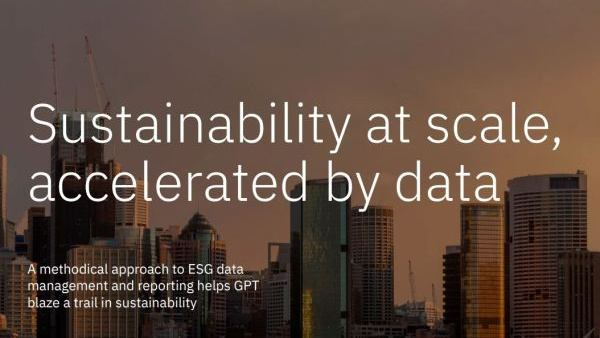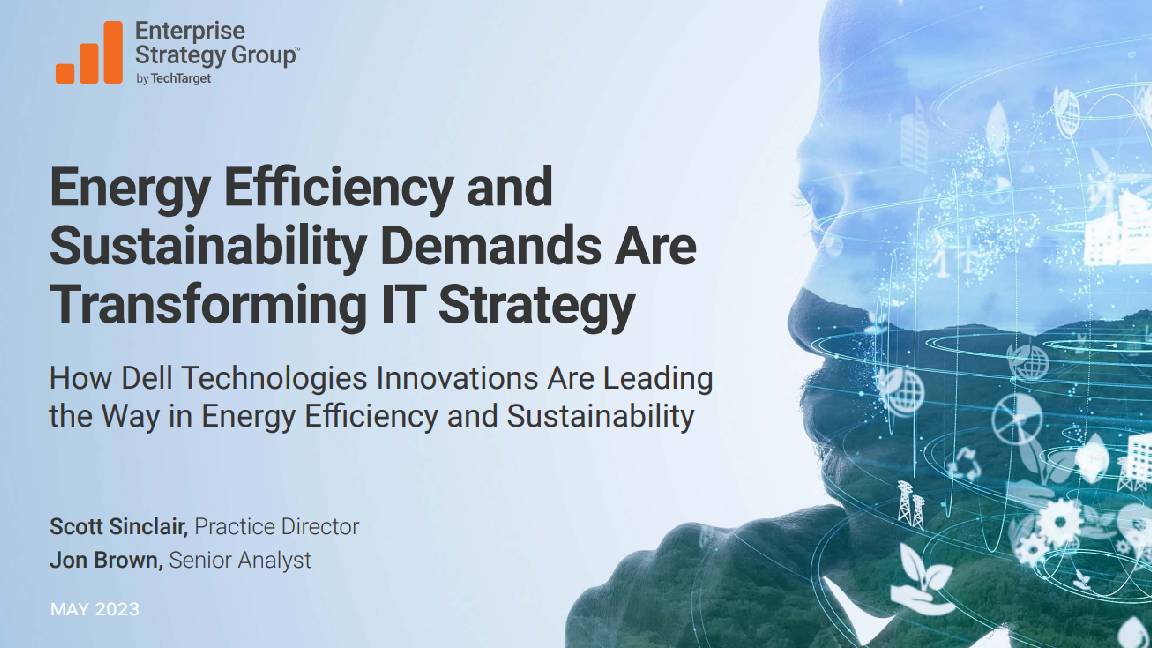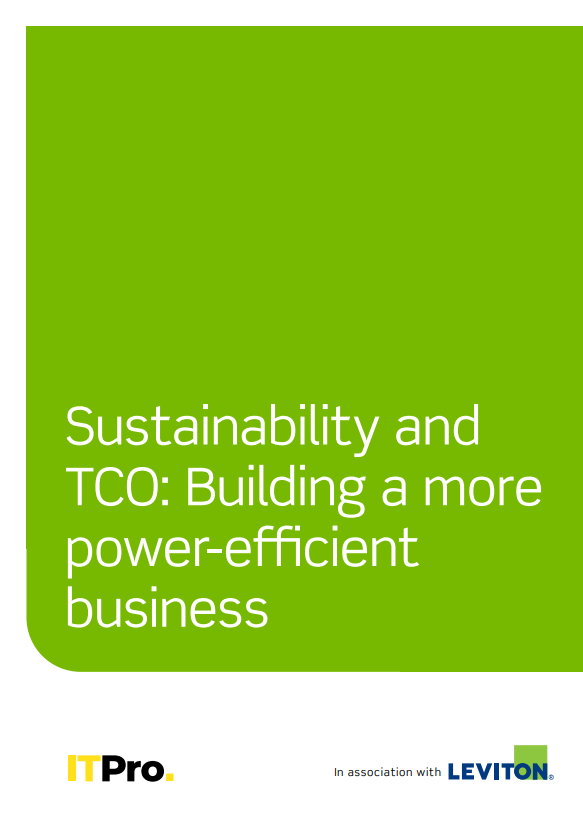How much say does IT really have in sustainability initiatives?
Vendors are ready to proclaim their green credentials, but as members of the ITPro Network explain, making changes on the ground can be complex


The role of IT in saving the planet, and that of IT in general, is a complex one. Cloud computing, for example, has allowed many organizations to offer staff hybrid or fully remote positions, but increasingly the power demands of the data centers that underpin it are coming in for scrutiny.
Similarly, foundational pieces of IT estate from printers to laptops and even on-premises data centers are being targeted in an effort to reduce businesses’ impact on the environment.
Vendors are finding ways to answer these calls, from low-energy hardware, non-toxic inks, and refillable toner cartridges, to cloud data centers that run on renewable energy sources or make novel use of the heat from their cooling systems. The ability of IT decision makers to take advantage of this, however, isn’t as clear-cut as it’s often made out to be.
It’s not always easy being green
IT decision makers with an environmental conscience may wish to use their influence to make their own department and its responsibilities as eco-friendly as possible. This could include buying energy-efficient laptops or ones that are made largely from recycled materials, for example, or opting for public cloud services, which tend to be more environmentally friendly than self-hosted and managed data centers, where possible.
It’s not always as simple as just making a decision and running with it, though, as members of the ITPro Network explain.
According to Chris Madden, CTO of Kreston Reeves, company culture will have a big influence on what the IT department can and can’t do.
“Some businesses will simply want to buy the cheapest, most polluting and dispose of in the cheapest way,” says Madden. “Others will have [environmental and social] policies and possibly be looking at UN sustainable goals which means a more balanced approach.”
Sign up today and you will receive a free copy of our Future Focus 2025 report - the leading guidance on AI, cybersecurity and other IT challenges as per 700+ senior executives
RELATED RESOURCE

Sustainability at scale, accelerated by data
Download this study to learn how GPT delivered winning sustainability outcomes and better business resiliency.
“IT teams can however make an impact by looking around the market, creating some benchmarks to score vendors against and dispose of via companies that actively recycle or reuse. Sometimes green can be a lower cost but there needs to be a willingness (and time) to put in the effort,” he adds.
Even if an agreement is made at an organizational level that allows the IT department to take a more environmentally friendly approach, time may not initially be on their side.
“There's sometimes an issue around timing, both for contracts and asset write-off,” says Liam Quinn, IT Director at Richmond events. “It's hard to adapt and change if contracts have a while to run, or finance isn't willing to write down existing kit.”
If this is the case, then it may be that you have to wait until the next time there’s a hardware refresh planned to make any changes or investments.
Dodging the greenwash
Even if you’ve avoided or overcome the issues set out above, there are still potential traps en route to transforming your IT operations into an engine of environmental responsibility.
Chief among these is greenwashing – when a supplier claims to be behaving in an environmentally friendly way while in reality doing very little or even nothing to back that up.
“Some organizations have the rigorous integrity to make ‘green’ a fundamental pillar of their operation, but I still see a lot for whom there is no commitment to sustainability in environmental terms when there is any effort required to measure environmental, social, and corporate governance (ESG) and the bottom line,” says Mark Evans, IT Director at Tilia Homes. “It seems reminiscent of ‘Stick a rainbow flag in reception during Pride Month to keep the pink pound; coming in.’ There still seems to be a lot of lip service.”
Madden has similar feelings, arguing that the idea of green business is getting “warped”.
“Businesses can say they are zero emission by buying credit for planting trees, many of which don't get looked after and quickly die so are of no benefit at all,” he says. “You can draw a box around a manufacturing process to claim green credentials, yet elsewhere in the production chain, there are very damaging processes. So it’s very hard for us to determine which manufacturer is better for the environment unless we have the capacity to look at the whole manufacturing cycle from mine of raw materials to finished, delivered product, to recycling.”
Depending on an organization’s stance, the due diligence for ESG can go even further – and become even more knotty.
Peter O’Rourke, assistant director of IT operations at the University of Sussex, explains: “I’m fortunate to work for an organization with global sustainability aspirations, which means we have to ensure end-to-end supply chain sustainability. This is embedded into our procurement approaches. This helps greatly, otherwise cost would become far too much of a single-issue focus. We frame it as demonstrating value for money; it needs to be competitive, though not at the expense of environmental sustainability aspirations.
“That said, trying to hold our suppliers’ downstream supply chain sustainability to account is an interesting challenge.”
For IT professionals, what they can do to effect change when it comes to ESG attitudes and goals is ultimately limited by the attitude of those at the top. That’s not to say nothing can be done, though. In the face of an organization that’s focused on cost above all else, advocating for low-energy units with a longer lifespan can be a winning strategy – especially when the cost of energy is high. More enlightened organizations that take their role in protecting the environment seriously can also up their game by ensuring suppliers they use – and the businesses that supply them – have a strong ESG ethos and act on it too. Due diligence can take more time and effort, but it can be a necessary burden.
Featured experts





Jane McCallion is Managing Editor of ITPro and ChannelPro, specializing in data centers, enterprise IT infrastructure, and cybersecurity. Before becoming Managing Editor, she held the role of Deputy Editor and, prior to that, Features Editor, managing a pool of freelance and internal writers, while continuing to specialize in enterprise IT infrastructure, and business strategy.
Prior to joining ITPro, Jane was a freelance business journalist writing as both Jane McCallion and Jane Bordenave for titles such as European CEO, World Finance, and Business Excellence Magazine.
-
 Beyond the upgrade: How to maximize IT investments and minimize waste
Beyond the upgrade: How to maximize IT investments and minimize wasteHow to maintain optimal performance and productivity with your fleet of hardware and stave off the next upgrade cycle for a bit longer
-
 Energy efficiency and sustainability demands are transforming IT strategy
Energy efficiency and sustainability demands are transforming IT strategywhitepaper How Dell Technologies innovations are leading the way in energy effiency and sustainability
-
 Energy efficiency and sustainability demands are transforming IT strategy
Energy efficiency and sustainability demands are transforming IT strategywhitepaper How Dell Technologies innovations are leading the way in energy effiency and sustainability
-
 Your guide to smarter printing: 2024 edition
Your guide to smarter printing: 2024 editionWhitepaper Making smarter printing simple for all businesses
-
 How to empower employees to accelerate emissions reduction
How to empower employees to accelerate emissions reductionin depth With ICT accounting for as much as 3% of global carbon emissions, the same as aviation, the industry needs to increase emissions reduction
-
 ESG: Designing the ideal digital work experience for the next generation of innovators
ESG: Designing the ideal digital work experience for the next generation of innovatorsWhitepaper What users want, why it's critical to give it to them, and how the whole organization can benefit
-
 A guide to ESG reporting frameworks
A guide to ESG reporting frameworksWhitepaper Guidelines to assist with your approach to ESG reporting
-
 Sustainability and TCO: Building a more power-efficient business
Sustainability and TCO: Building a more power-efficient businessWhitepaper Sustainable thinking is good for the planet and society, and your brand

